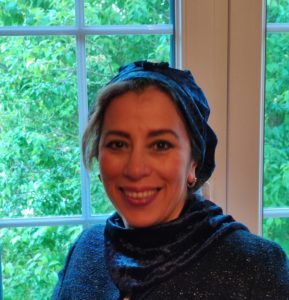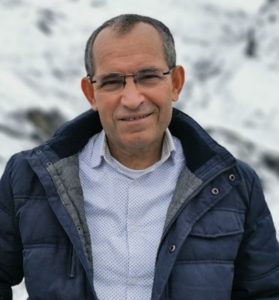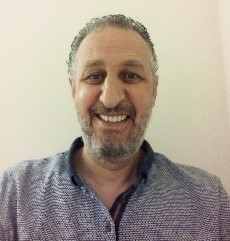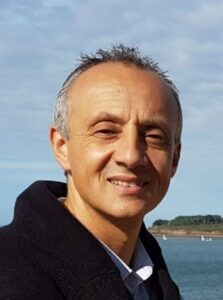
Amina TACHAFINE
Université du Littorale Côte d’Opale, France
Talk: Impedance spectroscopy of Lead-free ferroelectric materials for environmentally friendly capacitors applications
Abstract: The study of dielectric and ferroelectric materials has led in recent years to important technological advances in electronics. The development of components such as resonators, capacitors, sensors, memories, tunable microwave devices…, has largely contributed to the developments and innovations in computer science, microelectronics and telecommunications (satellite communication, mobile telephony,…) both in the military and civilian fields. Currently, with the intensive development of transmission systems and portable electronics in general, an important need for high-frequency tunable components and multifunctional devices has arisen, with increasingly high technical requirements in terms of integration and miniaturization for more efficient electronic microdevices. Therefore, fundamental and applied research in materials is an important objective for the future. The current requirements are twofold: a very strong integration of components and a rise in frequency caused in particular by the increasing congestion of the allocated frequency bands. New solutions are therefore to be considered through the search for new materials and/or new structures.
Today, ceramic capacitors are one of the most widely used forms of capacitor used in electronic equipment. With the progress of high-frequency technologies, the dielectric properties of materials used in electronic components, such as telecommunication devices, are of importance for satisfying conditions on the quality factor Q = 1/tgδ [1-2]. In this way, high-frequency systems for telecommunications have attracted great interest. Lead-based ferroelectric ceramics, such as Pb(Zr,Ti)O 3 (PZT), have attracted worldwide research interest due to their high dielectric performance. However, it contains lead in regards with the European directive Restriction of Hazardous Substances, 2002/95/CE (RoHS)…
Accordingly, it is now necessary to implement materials without these prohibited substances, and presenting low losses, high dielectric permittivity and relatively stable properties in frequency and temperature. In particular, Barium titanate (BaTiO 3 ) material has good dielectric properties, which make it the most used base material to elaborate high dielectric permittivity capacitors. Also, the strontium titanate (SrTiO 3 ) material is interesting because it presents low dielectric losses at high frequency. To improve the dielectric properties of these materials, it is possible to make different substitutions at their A and B sites [3], allowing them to respond to the required specifications, while developing ecological capacitors. This work is part of an international context that aims at exploiting the physical properties of ferroelectric materials for tunable and environmentally friendly capacitor applications.
Gérard Leroy
Université du Littoral Côte d’Opale, France
Talk: Measurement and Analysis of electrochemical noise in Li-ion batteries
Biography: Gérard Leroy is a professor at the University of Littoral Côte d'Opale, France. He obtained a doctorate degree from the University of Littoral Côte d’Opale, France, in 2002. He carries out his research in the Dynamics and Structure of Molecular Materials Unit.
Abstract: Electrochemical noise measurements have been applied to electrochemical systems exhibiting stochastic behavior. The standard area of study that benefits from this stochastic analysis is that of localized corrosion modes such as pitting and crevice corrosion. The application of electrochemical noise measurements to battery systems, although rare, has recently become more popular. This contribution presents electrochemical measurement benches and establishes a method for analyzing electrochemical voltage noise data for Li-ion batteries.
 Fathollah Varnik
Fathollah Varnik
Ruhr-Bochum University, Germany
Talk: Solvent effects in shape memory polymers: Experiments and computer simulations
Biography: Fathollah Varnik received his PhD in theoretical physics at the University of Mainz, Germany. After three postdoctoral years in France (ENS Lyon and CECAM) he became a research group leader at the Max-Planck Institute for Iron Research in Düsseldorf (2004-2008). In 2007, he received habilitation (Venia Legendi) from RWTH-Aachen, Germany. In 2008, he joined the newly founded Interdisciplinary Centre for Advanced Materials Simulation (ICAMS) at the Ruhr- University Bochum, where he later received professorship at the faculty of mechanical engineering (2017). Research interests of Fathollah Varnik cover a broad range including metallic glasses, polymers as well as fluid dynamics. In the years 2010-2015, his research unit made major contributions to the development of lattice-Boltzmann based models to study nano-fluidic phenomena. Since a few years, he has been also working on modelling gas flow through packed beds and combustion via a combination of the lattice Boltzmann method and the phase field approach.
Abstract: Shape memory materials find a large variety of applications ranging from solar panels and wind foils to stents, the latter used to widen sclerotic coronary arteries. Among these, metallic shape memory alloys (SMAs) are often used as mechanical switches, whereas shape memory polymers (SMPs) show promising biocompatibility potentials and therefore find increasing applications in biomedicine. Common to all these materials is their ability to recover a programmed shape via activation of a switching mechanism, e.g., heating above a certain threshold temperature. The recovery process in SMAs is a diffusionless martensitic phase transformation. The shape memory effect in polymers, on the other hand, has an entropic origin: Upon heating above the glass transition temperature, stretched polymers, which had been immobilized via cooling to room temperature, become mobile again and recover a high entropic spherical conformation. This presentation provides a brief survey of these fascinating materials and their applications. It also addresses the effect of small solvent molecules on the shape recovery process in SMPs both from the experimental side and via molecular dynamics computer simulations of simple model systems.

Mustapha Zaghrioui
University of Tours, France
Talk Title: Raman scattering and Photoluminescence on single crystals of rare earth orthochromite RCrO3 (R = La, Pr, Nd and Sm)
Biography: Mustapha Zaghrioui est maître de conférences au laboratoire GREMAN à l’université de Tours depuis 2002. Il a obtenu son Doctorat en physique à l’université du Mans en 2000 sous la direction de Patrick Laffez et Alain Bulou.
Abstract: We report on flux single crystal growth, polarized Raman scattering and photoluminescence of rare earth orthochromites RCrO 3 (R = La, Pr, Nd and Sm). These compounds belong to multiferroic materials family as they exhibit both ferroelectric order and antiferromagnetic order. Different explanations were then given to interpret this behaviour, among them we can mention the role of exchange striction between the rare-earth moments and chromium atoms or also a local symmetry breaking due to the antiferromagnetic order. However, origin and mechanism of ferroelectricity remains elusive. To investigate structural changes related to this property, we first focus on the Raman mode assignment and their evolution versus rare earth at room temperature; then we investigate thermal behaviour of these modes between 80 K and 300 K. Finally, we probed the magnetic coupling by studying the luminescence spectra of Nd 3+ ion as a function of the temperature.

Jean-François Bardeau
Université du Mans, France
Talk Title: Raman detection of analytes in the 10-6 – 10-8 M range: Highlight on commercial SERS substrates and on a low-cost nano-rough gold substrate
Biography: Jean-François BARDEAU est Directeur de Recherche au CNRS à l’Institut des Molécules et Matériaux du Mans (IMMM) de l’Université du Mans. Il s’est spécialisé dans l’étude des propriétés structurales et dynamiques de différentes classes de matériaux dont les matériaux hybrides organique/inorganiques et les biomatériaux (bio-minéralisation de mollusques marins à coquille unique et bivalves, pigments).
Plus récemment, il a orienté une partie de ses recherches sur la compréhension des phénomènes d’exaltations électromagnétiques associés aux systèmes confinés et nanostructurés pour développer des capteurs SERS (surface enhanced. Raman scattering) robustes, fiables et reproductibles en vue d’ applications dans les domaines de la santé et de l’environnement.
Abstract: Surface Enhanced Raman Spectroscopy (SERS) is a powerful non-invasive technique that is increasingly used to detect and identify traces of molecules. Although the sensitivity of SERS-active substrates is widely recognized, most of the applications have been severely limited by the low reproducibility, very small active surface area and high manufacturing cost of substrates. Today, commercial SERS substrates can be purchased, but because the manufacturing processes are generally different, the surface quality is not equivalent, nor are the enhancement factors and the reproducibility from one batch to another.
We have recently investigated and compared the efficiency of three different commercial SERS substrates and our home-made optimized nanorough substrate to detect a standard target molecule, thiophenol in alcoholic solution diluted at 10-6 M and 10-8 M. The spectral quality, signal homogeneity, distribution of intensity and thermal stability under laser beam will be discussed. Finally, I will show how our nanorough gold substrate can be used to detect and identify model molecules in binary systems by using statistical tools and multivariate data analysis.

